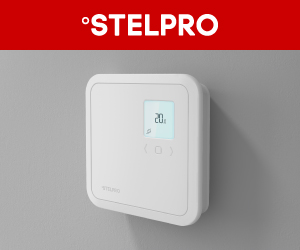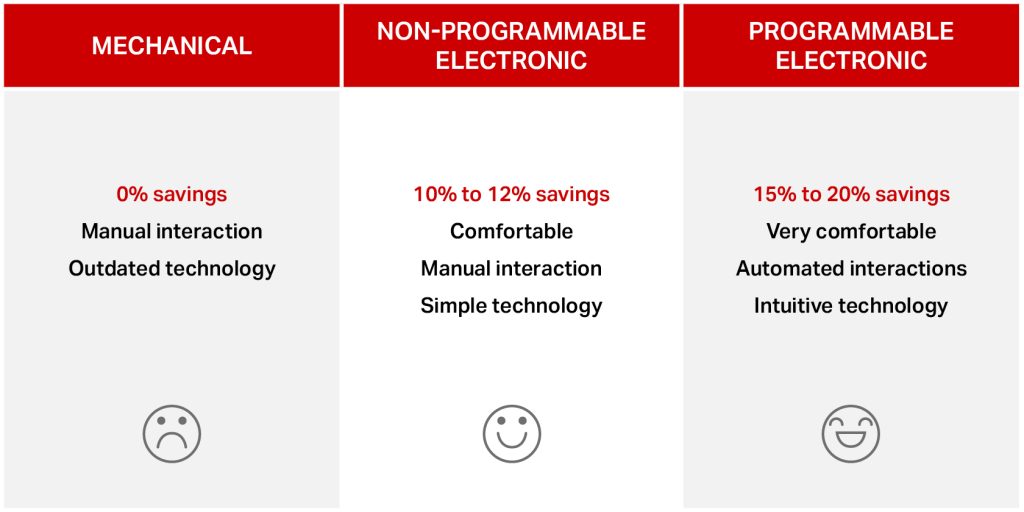Electronic or Mechanical Thermostats? Which One Should you Offer to Your Customers?

Electronic thermostats already have a great reputation, but why exactly are they more interesting by far than one- or two-pole mechanical thermostats.
Electronic thermostats consist of integrated circuits and mini fixed components. Depending on the model, these thermostats can be programmed with exposed or concealed buttons or directly on a touchscreen. The biggest advantage of this type of device is that it allows for a perfectly controlled, stable, and uniform temperature as it is constantly in temperature analysis mode.
Electronic thermostats
Unlike mechanical thermostats, which operate by allowing a deviation of two to four degrees Celsius, electronic thermostats limit variations by +/- 0.1 degree Celsius. This means that electronic thermostats are very precise and therefore more efficient.

Electronic thermostat models are more sophisticated. You can program the temperature of the rooms of the house for nighttime and for times you are absent. Thanks to this programming, energy savings are possible! Furthermore, many innovations have become availalbe in the last few years, including smart home thermostats controlled remotely by smartphone or through the internet.
The built-in electronics have another advantage. Since a baseboard or convector controlled by this type of thermostat is constantly operating (short cycles), the heating device will rarely get too hot to the touch and will work quietly and without unpleasant temperature contrasts during the peak heating season as opposed to mechanical thermostats.
Mechanical thermostats
Mechanical thermostats are a kind of power switch. They usually have a knob and a housing that hides some of its moving parts, including a fixed contact and a movable lever composed of two metals with separate expansion coefficients that respond to the effects of temperature change. The end of the lever will make contact with the fixed contact when the room temperature is decreasing (which turns on the heating device) and separates if the room temperature increases (which shuts off the heating device). As a result, depending on demand, the baseboard or convector can run full throttle for a long while and become very hot or, conversely, not run for several minutes and create a noticeable discomfort.
Although increasingly passed over, this type of thermostat can nevertheless be useful in very rare applications. For instance, when you need to operate a heating device powered by an unstable electrical source.

Energy savings by thermostat type
How much energy can be saved by installing different types of thermostats? Here’s a summary of the possible energy savings from choosing one or another technology:













